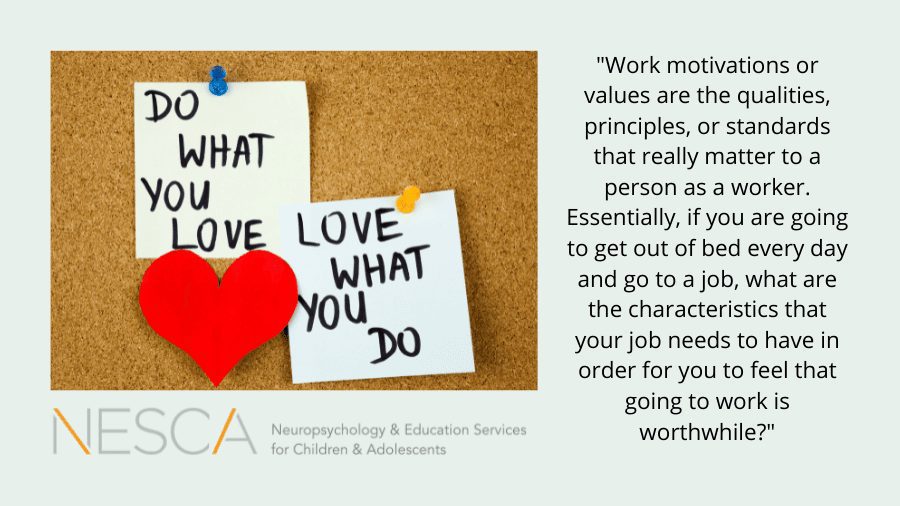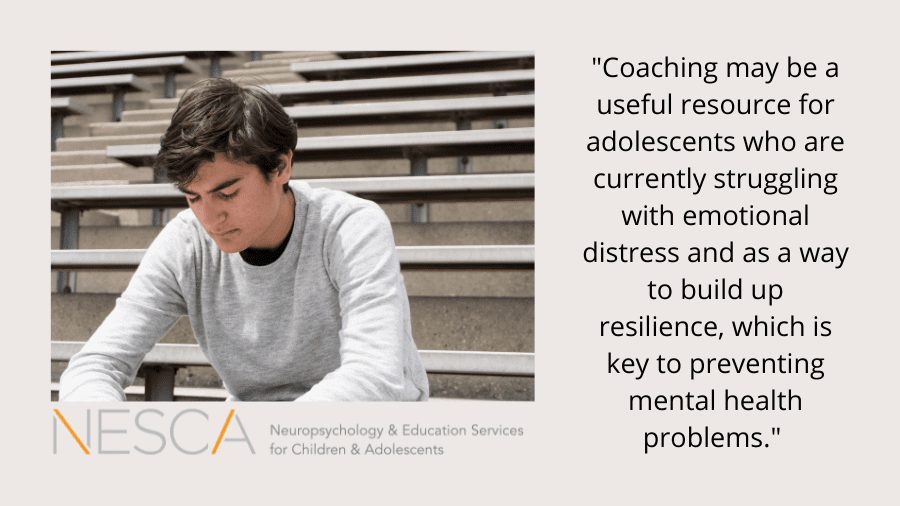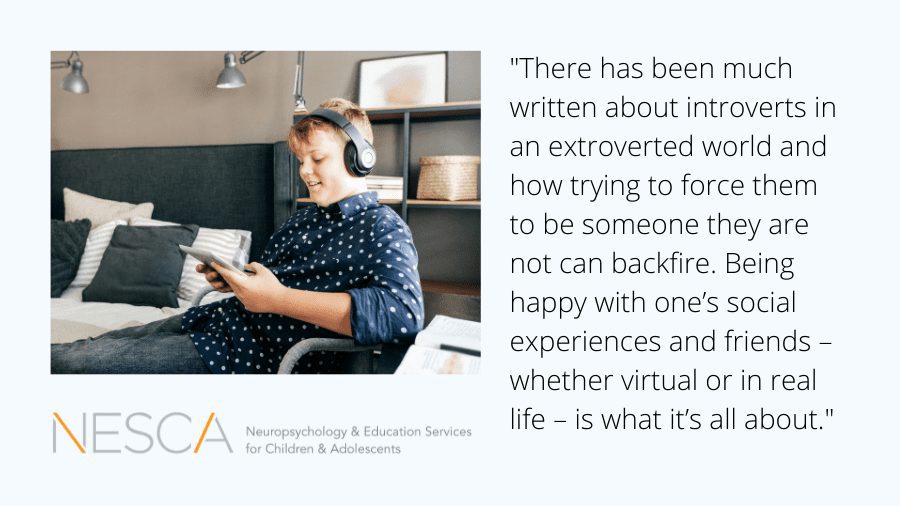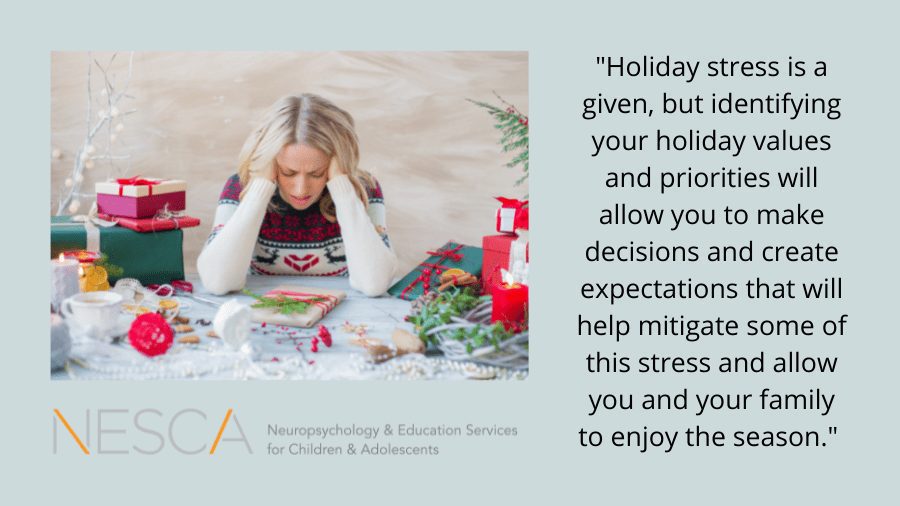
 By: Kelley Challen, Ed.M., CAS
By: Kelley Challen, Ed.M., CAS
Director of Transition Services; Transition Specialist, NESCA
Over the past few months, my colleague Tabitha Monahan and I have dedicated several of our blog entries to vocational assessment as a critical tool for helping students learn about employment and set career goals for themselves. Previous blogs have provided an overview of vocational assessment as well as an in depth look at career interest inventories, vocational aptitude testing, and real-life experiences, such as informational interviews and job shadows. However, there is another type of vocational assessment that we have not yet discussed that can be an invaluable tool for helping students to learn about their “vocational selves” and ultimately choosing occupations that are a good fit—a work motivation or work value assessment.
Work motivations or values are the qualities, principles, or standards that really matter to a person as a worker. Essentially, if you are going to get out of bed every day and go to a job, what are the characteristics that your job needs to have in order for you to feel that going to work is worthwhile? Certainly, money can be an important characteristic of a job, but is that more important to you than helping others, creativity, or recognition? Each of us has a different set of values that will drive us to make choices and take action in our lives, and having an occupation that satisfies those values is just as important as having a job that aligns with our interests and skills.
Similar to career interest inventories, work motivation and value assessments come in many shapes and sizes, some formal (e.g., lengthy and standardized) and some informal (e.g., short checklists or rating scales). Also, similar to career interest inventories, it can be helpful to administer or self-administer more than one of these assessment tools to get a sense of how clear one’s work motivations and values are (i.e., how often an individual responds to assessments with a similar pattern of expressed values). Additionally, it is recommended that students not just take assessments, but that educators and career counselors engage students in qualitative conversations about their results so that students have the opportunity to clarify their values as well as more quantitative exercises, such as comparing work values with career interests.
While there are many different work motivation and value classification systems, I’m choosing to highlight the four work motive categories and eight value constructs from one of my favorite assessment tools, the Work Motivation Scale below.
Fulfillment Motives: The need for work that provides the individual with opportunities to reach their maximum potential. Creativity, curiosity, foresight, and competence are attributes that are often observed in individuals with high fulfillment motives. Fulfillment motives are comprised of the following work value constructs:
- Success Orientation: Individuals scoring high on this construct are motivated toward accomplishing career goals and reaching their full potential through their work. Passionate about their work, they are willing to endure periods of hardship to be successful.
- Mission Orientation: Individuals scoring high on this construct are oriented toward seeing the big picture and tend to be less concerned with details. Goal directed, they recognize how their current work fits into and contributes to the overall direction of the organization.
Self-Esteem Motives: The need for achievement, responsibility, and challenging and meaningful work tasks. Links between leadership and achievement are usually present for individuals with high self-esteem motives. Self-esteem motives are comprised of the following work value constructs:
- Managing Others: Individuals scoring high on this construct value opportunities to direct and supervise the work of others. They willingly take responsibility for worker performance and the productivity of a work unit, department, or work function.
- Task Orientation: Individuals scoring high on this construct are oriented toward completing tasks. Planning their work, making the most of resources, and maintaining their focus are important to them. They may hesitate to perform functions outside of those tied to a specific job description.
Affiliation Motives: The need for the acceptance and support of coworkers and supervisors. Cooperation and collaboration toward meeting work goals are sought by individuals with high affiliation motives. Affiliation motives are comprised of the following work value constructs:
- Supervisor Relations: Individuals scoring high on this construct feel that cooperating with and relating to their supervisor are important. They strive to meet their supervisor’s expectations and highly appreciate their supervisor’s recognition and support.
- Coworker Relations: Individuals scoring high on this construct feel that relating to peers is important. They prefer to be actively involved in employee related organizations at work and outside of work. They highly value collaboration and teamwork.
Survival and Safety Motives: The need for employment with an adequate livable wage and a safe and secure work environment. The need for favorable benefits packages is also valued by individuals with high survival and safety motives. Survival and safety motives are comprised of the following work value constructs:
- Working Conditions: Individuals scoring high on this construct believe that a good work environment and creature comforts (climate control, privacy, adequate lighting) are important. They value having the materials, equipment, and resources to do their work effectively and efficiently.
- Earnings and Benefits: Individuals scoring high on this construct value salary, raises, health insurance plans, pensions, and retirement planning. Vacation, sick leave, personal days, and family leave policy are important considerations in their employment choices as well.
Definitions provided by/taken from the Work Motivation Scale Administrator’s Guide.
Understanding which of these constructs and categories matter most to a student, and a student understanding this about themselves, can have a huge impact on helping a young person to find fulfilling work.
To read more about vocational assessment, check out the following blog entries:
- Vocational Assessment and Transition Planning – https://nesca-newton.com/vocational-assessment-and-transition-planning/
- Interest Inventories – https://nesca-newton.com/interest-inventories/
- Informational Interviews and Job Shadowing – https://nesca-newton.com/informational-interviews-job-shadowing/
- Vocational Aptitude Testing – https://nesca-newton.com/vocational-aptitude-testing/
For more information about vocation assessment and transition assessment at NESCA, visit our transition services page and our transition FAQs.
About the Author
Kelley Challen, Ed.M., CAS, is NESCA’s Director of Transition Services, overseeing planning, consultation, evaluation, coaching, case management, training and program development services. Ms. Challen also provides expert witness testimony in legal proceedings related to special education. She is also the Assistant Director of NESCA, working under Dr. Ann Helmus to support day-to-day operations of the practice. Ms. Challen began facilitating programs for children and adolescents with special needs in 2004. After receiving her Master’s Degree and Certificate of Advanced Study in Risk and Prevention Counseling from Harvard Graduate School of Education, Ms. Challen spent several years at the MGH Aspire Program where she founded an array of social, life and career skill development programs for teens and young adults with Asperger’s Syndrome and related profiles. She additionally worked at the Northeast Arc as Program Director for the Spotlight Program, a drama-based social pragmatics program, serving youth with a wide range of diagnoses and collaborating with several school districts to design in-house social skills and transition programs. Ms. Challen is co-author of the chapter “Technologies to Support Interventions for Social- Emotional Intelligence, Self-Awareness, Personality Style, and Self-Regulation” for the book Technology Tools for Students with Autism. She is also a proud mother of two energetic boys, ages six and three. While Ms. Challen has special expertise in supporting students with Autism Spectrum Disorders, she provides support to individuals with a wide range of developmental and learning abilities, including students with complex medical needs.
Neuropsychology & Education Services for Children & Adolescents (NESCA) is a pediatric neuropsychology practice and integrative treatment center with offices in Newton, Massachusetts, Plainville, Massachusetts, and Londonderry, New Hampshire, serving clients from preschool through young adulthood and their families. For more information, please email info@nesca-newton.com, call 617-658-9800 or complete our online Intake Form.



 neuropsychologist who has been practicing for almost 20 years. In 1996, she jointly founded the Children’s Evaluation Center (CEC) in Newton, Massachusetts, serving as co-director there for almost ten years. During that time, CEC emerged as a leading regional center for the diagnosis and remediation of both learning disabilities and Autism Spectrum Disorders.
neuropsychologist who has been practicing for almost 20 years. In 1996, she jointly founded the Children’s Evaluation Center (CEC) in Newton, Massachusetts, serving as co-director there for almost ten years. During that time, CEC emerged as a leading regional center for the diagnosis and remediation of both learning disabilities and Autism Spectrum Disorders.
 and academia for over 30 years. She is a national consultant and speaker on program design and the inclusion of children and adolescents with special needs, especially those diagnosed with Autism Spectrum Disorder (ASD). Prior to joining NESCA, Ms. Lucci was the Principal of the Partners Program/EDCO Collaborative and previously the Program Director and Director of Consultation at MGH/Aspire for 13 years, where she built child, teen and young adult programs and established the 3-Ss (self-awareness, social competency and stress management) as the programming backbone. She also served as director of the Autism Support Center. Ms. Lucci was previously an elementary classroom teacher, special educator, researcher, school psychologist, college professor and director of public schools, a private special education school and an education collaborative.
and academia for over 30 years. She is a national consultant and speaker on program design and the inclusion of children and adolescents with special needs, especially those diagnosed with Autism Spectrum Disorder (ASD). Prior to joining NESCA, Ms. Lucci was the Principal of the Partners Program/EDCO Collaborative and previously the Program Director and Director of Consultation at MGH/Aspire for 13 years, where she built child, teen and young adult programs and established the 3-Ss (self-awareness, social competency and stress management) as the programming backbone. She also served as director of the Autism Support Center. Ms. Lucci was previously an elementary classroom teacher, special educator, researcher, school psychologist, college professor and director of public schools, a private special education school and an education collaborative.
 Londonderry, NH office. She specializes in the evaluation of anxious children and teens, working to tease apart the various factors lending to their stress, such as underlying learning, attentional, or emotional challenges. She particularly enjoys working with the seemingly “unmotivated” child, as well as children who have “flown under the radar” for years due to their desire to succeed.
Londonderry, NH office. She specializes in the evaluation of anxious children and teens, working to tease apart the various factors lending to their stress, such as underlying learning, attentional, or emotional challenges. She particularly enjoys working with the seemingly “unmotivated” child, as well as children who have “flown under the radar” for years due to their desire to succeed. By
By  complex, inter-related needs, with a particular emphasis on identifying co-occurring neurodevelopmental and psychiatric challenges. She specializes in the evaluation of developmental disabilities including autism spectrum disorder and social-emotional difficulties stemming from mood, anxiety, attachment and trauma-related diagnoses. She often assesses children who have “unique learning styles” that can underlie deficits in problem-solving, emotion regulation, social skills and self-esteem.
complex, inter-related needs, with a particular emphasis on identifying co-occurring neurodevelopmental and psychiatric challenges. She specializes in the evaluation of developmental disabilities including autism spectrum disorder and social-emotional difficulties stemming from mood, anxiety, attachment and trauma-related diagnoses. She often assesses children who have “unique learning styles” that can underlie deficits in problem-solving, emotion regulation, social skills and self-esteem.



 attention deficit disorders, communication disorders, intellectual disabilities, and learning disabilities. She particularly enjoys working with children and their families who have concerns regarding an autism spectrum disorder. Dr. Milana has received specialized training on the administration of the Autism Diagnostic Observation Schedule (ADOS).
attention deficit disorders, communication disorders, intellectual disabilities, and learning disabilities. She particularly enjoys working with children and their families who have concerns regarding an autism spectrum disorder. Dr. Milana has received specialized training on the administration of the Autism Diagnostic Observation Schedule (ADOS).

Connect with Us